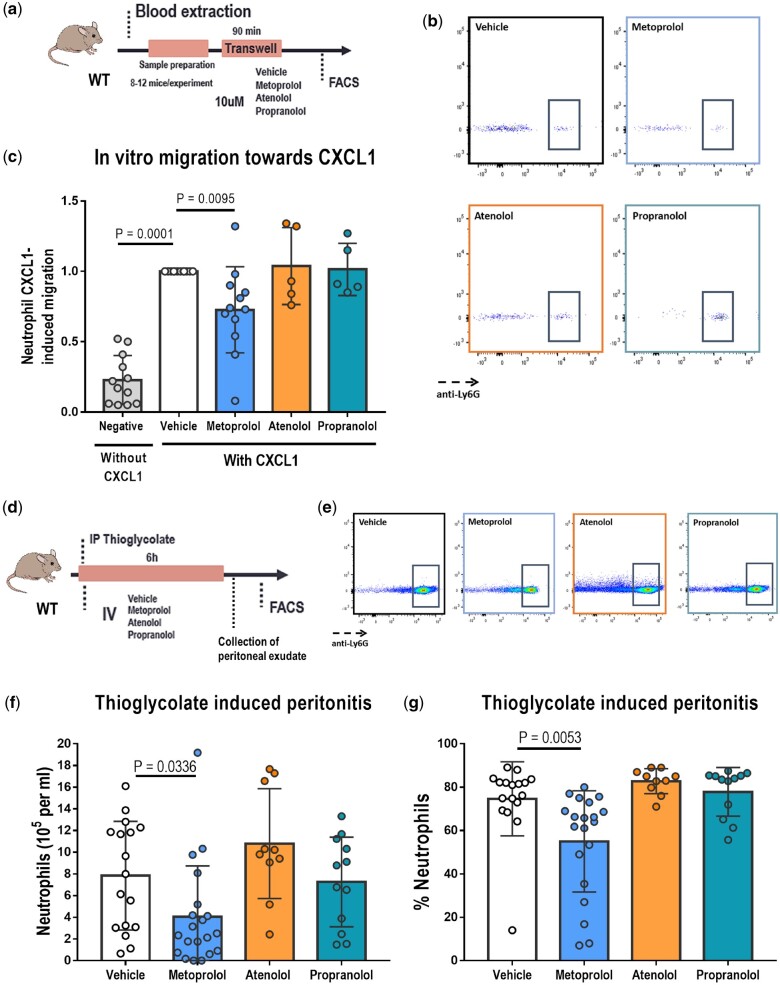Figure 2.
Metoprolol has a particular ability to inhibit neutrophil migration. (A) Experimental scheme for CXCL1-induced transwell migration analysis. (B) Flow cytometry plots illustrating reduced migration of neutrophils (Ly6G+ cells) upon treatment with metoprolol. To allow comparison between experiments, neutrophil migration for all treatments was normalized to the mean positive control (vehicle) value in each independent experiment. (C) Particular limiting effect of metoprolol on chemokine-induced neutrophil migration. Each independent experiment was conducted with leucocytes pooled from 8 to 12 animals, and each condition was run with three to four technical replicates: n = 12 for all conditions except for atenolol and propranolol, n = 5 each. (D) Experimental scheme for thioglycolate-induced peritonitis. Mice received a 12.5 mg/kg i.v. β-blocker dose immediately after i.p. thioglycolate administration. (E) Flow cytometry plots illustrating reduced peritoneal infiltration of neutrophils (Ly6G+ cells) in metoprolol-treated mice. (F, G) Specific limiting effect of metoprolol on thioglycolate-induced peritoneal infiltration in wild-type mice. (F) Absolute number of neutrophils/mL of infiltrate 6 h after thioglycolate injection in wild-type mice. (G) Neutrophils in intraperitoneal exudate calculated as a percentage of total viable cells. Vehicle, n = 16; metoprolol, n = 18; atenolol, n = 10; propranolol, n = 12. Data are presented as mean ± SD.

